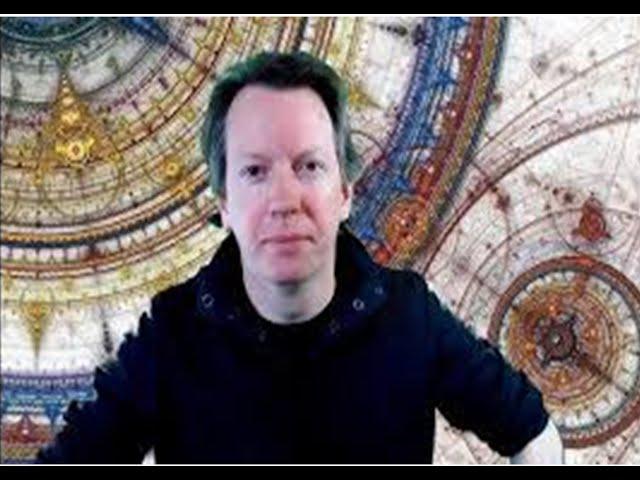
Physics Professor Sean Carroll ask how complexity forms
Sean Carroll is a cosmologist and physics professor specializing in dark energy and general relativity. He is a research professor in the Department of Physics at the California Institute of Technology. He has been a contributor to the physics blog Cosmic Variance, and has published in scientific journals and magazines such as Nature, The New York Times, Sky & Telescope. In this video, he asks the question, how does complexity form?
This video also puts forward the idea that we only need one geometrical shape to arise naturally in the Universe for complexity to form out of a process of spherical symmetry forming and breaking.
In Alan Turing 1951-2 paper on, The Basis of Morphogenesis there is a requirement for spherical geometry. New patterns form relative to this spherical disturbance. Could this spherical geometry be fundamental in the potential for forming complexity?
Reference: https://www.youtube.com/watch?v=HBxWUiePtOA
It only takes one geometrical shape to form naturally in our Universe for complexity and diversity to arise. The geometrical aspect of this process is based on Huygens’ Principle of 1670 that says,
“Every point on a light wave front has the potential for a new spherical 4πr² light wave".
Each point on the wave front represents a potential photon ∆E=hf electron interaction or coupling. The spherical surface forms a boundary condition or manifold for the uncertainty ∆×∆pᵪ≥h/4π of this interaction.
Light waves radiate out spherically 4πr² with their interior forming the characteristic of three-dimensional space with the spherical surface forming a probabilistic wave front. Each point ∆E=hf on the wave front forms the potential for a new spherical wave, a photon of energy, a new oscillation or vibration that forms our future. We have to square the radius r² because process is unfolding relative to the surface of the sphere. Therefore, we have the probability wave function Ψ² is squared, the charge of the electron squared e² and the speed of light is squared c². All representing different aspect of the same process.
It only takes one geometrical shape to form naturally in our Universe for complexity and diversity to arise.
The geometrical aspect of this process is based on Huygens’ Principle of 1670 that says,
“Every point on a light wave front has the potential for a new spherical 4πr² light wave".
Each point on the wave front represents a potential photon ∆E=hf electron interaction or coupling. The spherical surface forms a boundary condition or manifold for the uncertainty ∆×∆pᵪ≥h/4π of this interaction.
Light waves radiate out spherically 4πr² with their interior forming the characteristic of three-dimensional space with the spherical surface forming a probabilistic wave front. Each point ∆E=hf on the wave front forms the potential for a new spherical wave, a photon of energy, a new oscillation or vibration that forms our future. We have to square the radius r² because process is unfolding relative to the surface of the sphere. Therefore, we have the probability wave function Ψ² is squared, the charge of the electron squared e² and the speed of light is squared c². All representing different aspect of the same process.
There is an electron sphere around the nucleus of each atom forming a standing wave in time. In this theory the spontaneous absorption and emission of light forms the continuum of time. The photon and electron have particle characteristics as part of the same geometrical process.
We can see spherical geometry arises naturally on the international space station in near zero gravity a candle flame naturally form a sphere that is interacting with the environment relative to its surface.
This theory was first published in 2008 it explains the mathematics of Quantum Mechanics as a geometrical process that forms the characteristics of time. Why life is temporal unfolding moment by moment with a future that is always uncertain with a past we can never change.
It explains a deeper understanding of ‘time’ with the exchange of light photon ∆E=hf energy is continuously transforming potential energy into the kinetic Eₖ=½mv² energy of matter, in the form of electrons, as an uncertain ∆×∆pᵪ≥h/4π probabilistic future unfolds. The Future is relative to our actions with the Planck Constant h/2π being a constant of action within a geometrical spherical 4πr² process that forms the characteristics of 3D space and continuum of time ∆E ∆t ≥ h/2π.
With each photon electron interaction, a potential future is emitted as a wave of probability with the past being annihilated in the form of anti-matter annihilation.
Because light has momentum and momentum is frame dependent, we can place each individual life form in the centre of their own reference frame in the moment of now. This can give us the concept of ‘the individual mind’ with each one of us having our own personal view of the Universe.
This video also puts forward the idea that we only need one geometrical shape to arise naturally in the Universe for complexity to form out of a process of spherical symmetry forming and breaking.
In Alan Turing 1951-2 paper on, The Basis of Morphogenesis there is a requirement for spherical geometry. New patterns form relative to this spherical disturbance. Could this spherical geometry be fundamental in the potential for forming complexity?
Reference: https://www.youtube.com/watch?v=HBxWUiePtOA
It only takes one geometrical shape to form naturally in our Universe for complexity and diversity to arise. The geometrical aspect of this process is based on Huygens’ Principle of 1670 that says,
“Every point on a light wave front has the potential for a new spherical 4πr² light wave".
Each point on the wave front represents a potential photon ∆E=hf electron interaction or coupling. The spherical surface forms a boundary condition or manifold for the uncertainty ∆×∆pᵪ≥h/4π of this interaction.
Light waves radiate out spherically 4πr² with their interior forming the characteristic of three-dimensional space with the spherical surface forming a probabilistic wave front. Each point ∆E=hf on the wave front forms the potential for a new spherical wave, a photon of energy, a new oscillation or vibration that forms our future. We have to square the radius r² because process is unfolding relative to the surface of the sphere. Therefore, we have the probability wave function Ψ² is squared, the charge of the electron squared e² and the speed of light is squared c². All representing different aspect of the same process.
It only takes one geometrical shape to form naturally in our Universe for complexity and diversity to arise.
The geometrical aspect of this process is based on Huygens’ Principle of 1670 that says,
“Every point on a light wave front has the potential for a new spherical 4πr² light wave".
Each point on the wave front represents a potential photon ∆E=hf electron interaction or coupling. The spherical surface forms a boundary condition or manifold for the uncertainty ∆×∆pᵪ≥h/4π of this interaction.
Light waves radiate out spherically 4πr² with their interior forming the characteristic of three-dimensional space with the spherical surface forming a probabilistic wave front. Each point ∆E=hf on the wave front forms the potential for a new spherical wave, a photon of energy, a new oscillation or vibration that forms our future. We have to square the radius r² because process is unfolding relative to the surface of the sphere. Therefore, we have the probability wave function Ψ² is squared, the charge of the electron squared e² and the speed of light is squared c². All representing different aspect of the same process.
There is an electron sphere around the nucleus of each atom forming a standing wave in time. In this theory the spontaneous absorption and emission of light forms the continuum of time. The photon and electron have particle characteristics as part of the same geometrical process.
We can see spherical geometry arises naturally on the international space station in near zero gravity a candle flame naturally form a sphere that is interacting with the environment relative to its surface.
This theory was first published in 2008 it explains the mathematics of Quantum Mechanics as a geometrical process that forms the characteristics of time. Why life is temporal unfolding moment by moment with a future that is always uncertain with a past we can never change.
It explains a deeper understanding of ‘time’ with the exchange of light photon ∆E=hf energy is continuously transforming potential energy into the kinetic Eₖ=½mv² energy of matter, in the form of electrons, as an uncertain ∆×∆pᵪ≥h/4π probabilistic future unfolds. The Future is relative to our actions with the Planck Constant h/2π being a constant of action within a geometrical spherical 4πr² process that forms the characteristics of 3D space and continuum of time ∆E ∆t ≥ h/2π.
With each photon electron interaction, a potential future is emitted as a wave of probability with the past being annihilated in the form of anti-matter annihilation.
Because light has momentum and momentum is frame dependent, we can place each individual life form in the centre of their own reference frame in the moment of now. This can give us the concept of ‘the individual mind’ with each one of us having our own personal view of the Universe.
Комментарии:
Physics Professor Sean Carroll ask how complexity forms
Dyslexic Artist Theory on the Physics of Time
東京ガス CM「長男の結婚」篇
autoxp041
COMO COMPREI MINHA CASA PRÓPRIA AOS 28 ANOS: Como me organizei financeiramente? Foi financiada?
Inara Souza | Casinha Arrumada
Back To France! | Orléans - tracing Joan d'Arc's story
We Are The Nomaders
Таисия Повалий - Одолжила...
Victoria7730
Супер клёв весенней уклейки!Оторвался по полной!
Жизнь Рыболова !!!







![Adam Lambert x Sigala - You Make Me Feel (Mighty Real) [Lyric Video] Adam Lambert x Sigala - You Make Me Feel (Mighty Real) [Lyric Video]](https://ruvideo.cc/img/upload/MHAyWGtpV2xpazY.jpg)


















